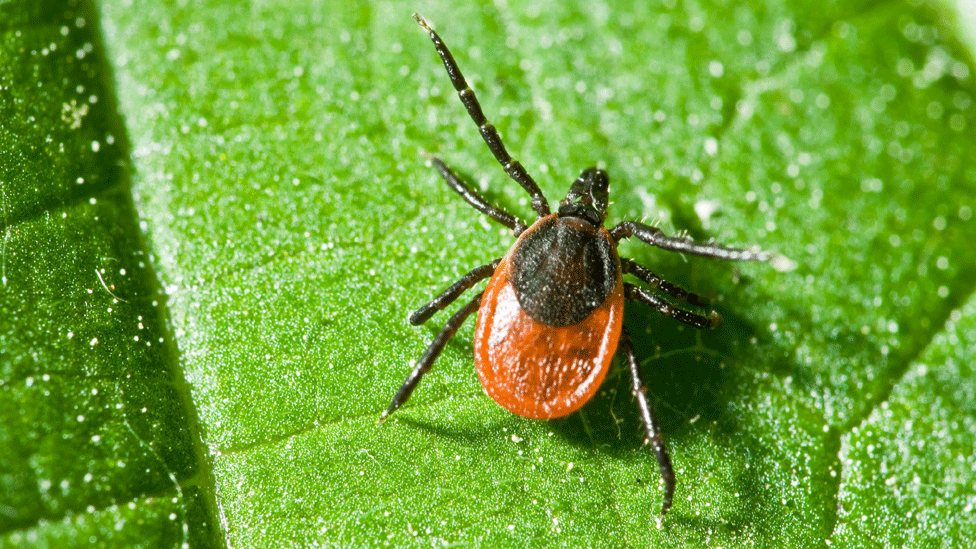Woman bedridden for two years by Lyme disease from tick bite
- Published
'A small bite changed my whole world'
A woman went from living the "best years of her life" to almost two years of illness and seclusion in a bedroom because of a tick bite.
Yen Lau, 32, from Glasgow, got Lyme disease after being bitten on a camping trip on a small island on Loch Lomond.
She was unaware of the risk posed by infected ticks and covered a tell-tale rash on her hand with make-up.
After her health deteriorated, Ms Lau said she was misdiagnosed with having chronic fatigue and a pain disorder.
According to the NHS UK website, external "a few people who are diagnosed and treated for Lyme disease continue to have symptoms, like tiredness, aches and loss of energy, that can last for years".
It adds: "It's not clear why this happens to some people and not others. This means there's also no agreed treatment."
It was not until a year-and-a-half after she was bitten that a test done by a laboratory in Germany confirmed she had Lyme disease.
Ms Lau has now welcomed the development of a new app in the Highlands mapping the occurrence of tick bites and the disease.
Scotland's Rural College (SRUC) is among Scottish organisations working on the technology backed by the European and UK space agencies, and aimed at mapping where the infection has been detected across the Northern Hemisphere.
Lyme disease is an infection that can be spread to humans by ticks carrying the Borrelia burgdorferi bacteria.
Diagnosed cases of Lyme disease have reached an estimated 3,000 per year in the UK and more than 65,000 per year in Europe, according to SRUC.
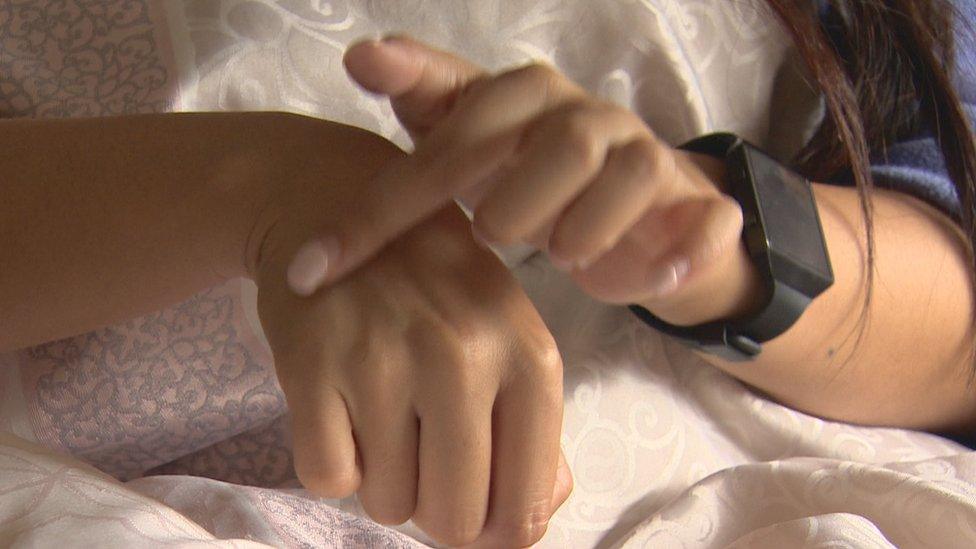
Ms Lau was bitten on a hand
Ms Lau was 30 and a business manager and make-up artist when she joined friends on the five-day camping trip on Loch Lomond.
She told BBC Scotland: "On my hand I had a little black dot.
"I thought 'aw, get this off me' and snapped the back of it off and left the head briefly in my hand.
"I just ignored it because I didn't realise it was a tick bite, or that it could lead to Lyme disease."

Lyme disease app

People can be exposed to Lyme disease from the bite of infected ticks
A project to develop a new LymeApp has been launched at an event in Inverness.
It is being created to map where ticks bites and Lyme disease have been detected.
The app is being developed in a £1.1m project aimed at providing information on the occurrence of ticks and Lyme disease across the Northern Hemisphere.
It will use satellite data and has received funding from the European and UK space agencies.
The app will draw on information from the Scottish Lyme Disease and Tick-borne Infections Reference Laboratory in Inverness, as well as information from general medical practitioners and those exposed to ticks through work or recreation.
The finished product is to have a function on the app which would allow people to report tick sightings and bites.

Morven-May MacCallum's says her life has been dominated by Lyme disease for nine years
A new company International Disease Mapping Apps Ltd, which involves SRUC, Highland Health Ventures Ltd, Environmental Research Group Ltd and Belgium-based firm Avia GIS NV, is developing the app.
Morven-May MacCallum, whose life has been dominated by Lyme disease for nine years, was a guest speaker at the launch event.
She said: "Lyme disease is an illness of unquestionable power and the damage it's had on my life and for thousands like me is immeasurable.
"It's wonderful to see professionals from across different areas of expertise come together to help advance our knowledge of this disease and, in the process, hopefully find the answers which are so desperately needed."

A few days later Ms Lau noticed a circular bull's eye-like skin rash on her hand, but covered it with make-up unaware it was an early symptom of Lyme disease.
Flu-like symptoms followed and then severe exhaustion.
Ms Lau said: "I would fall asleep while driving and after I came home from work I would fall asleep at 6pm and wake up 12 hours later fully clothed and make-up still on."
Her health continued to deteriorate to a point where she felt "bone-crushing" fatigue and was slurring her words. A concerned friend took her to Ms Lau's parents home.
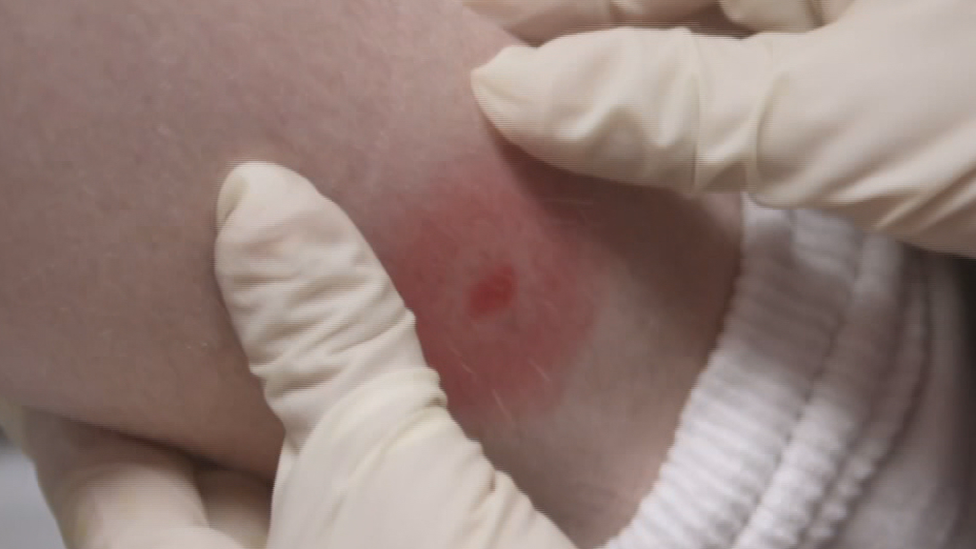
A distinctive bull's eye-like rash is an early symptom of Lyme disease
Ms Lau said that before she fell ill she had been healthy, working a full-time job, going to the gym six times a week and enjoyed socialising with her friends.
"I was a 30-year-old girl living her best life and then all of a sudden six weeks later I had no energy," she said.
"I couldn't get out of my bed, I couldn't brush my teeth on my own.
"I've lost my job and my friends and living in seclusion in a bedroom in my parents' home."
Doctors first diagnosed chronic fatigue disorder before Ms Lau was later told she may have a chronic pain disorder called fibromyalgia, whose sufferers include singer and actress Lady Gaga.
However, after watching a documentary about Lady Gaga's battle with fibromyalgia Ms Lau said she knew something else was afflicting her.
She said: "It took me two weeks to watch the documentary. I could only watch it for 10 minutes at a time before zapping out."
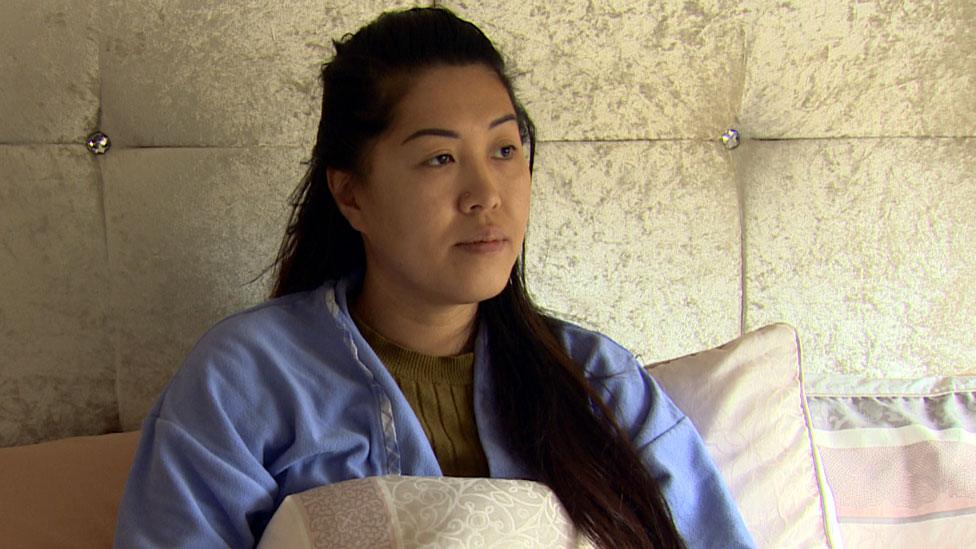
Ms Lau had been tested for Lyme disease and it had ruled it out. However, she said the test was not done for the bacteria spread by infected ticks.
She said the bacteria was only indentified in the test done by the German lab.
Ms Lau, who had the misfortune of later being bitten by a tick a second time while at a retreat in Crete during her recovery from the first bite, has welcomed the raising of awareness of tick bites and Lyme disease through the new app.
The infection can be treated with antibiotics within the first four weeks, and Ms Lau today spends every waking hour researching what treatments could help her now.
"It kills me every day to read on NHS websites that once bitten by a tick you can be given antibiotics within the first four weeks and that's it cured."
Lyme Disease
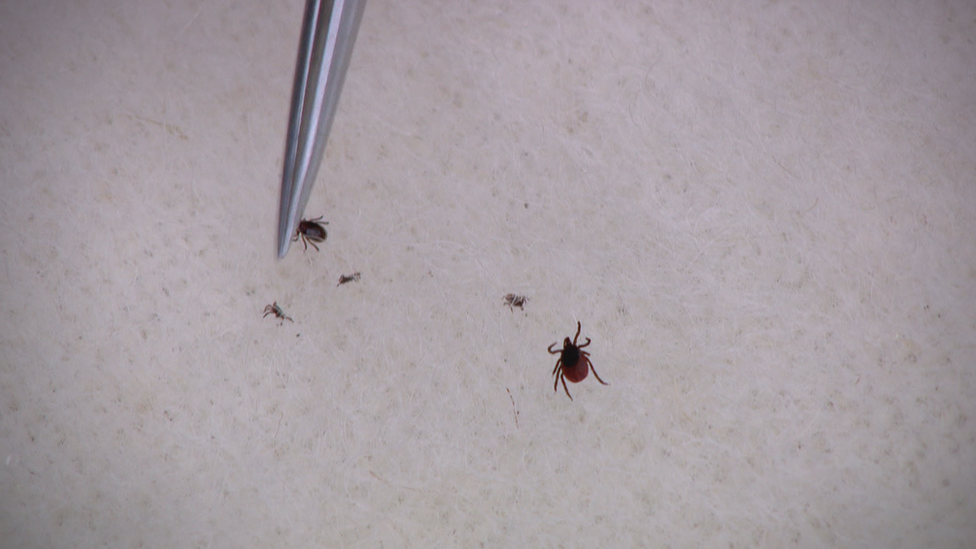
Ticks
Ticks that may cause Lyme disease are found all over the UK
High-risk areas include grassy and wooded areas in southern England and the Scottish Highlands
To reduce the risk of being bitten, cover your skin, tuck your trousers into your socks, use insect repellent and stick to paths
If you are bitten, remove the tick with fine-tipped tweezers or a tick-removal tool found in chemists
Clean the bite with antiseptic or soap and water
The risk of getting ill is low as only a small number of ticks are infected with the bacteria that cause Lyme disease
You don't need to do anything else unless you become unwell
You should go to your GP if you've been bitten by a tick or visited an area in the past month where infected ticks are found and you get flu-like symptoms or a circular red rash
These symptoms can include feeling hot and shivery, headaches, aching muscles or feeling sick
- Published17 June 2019
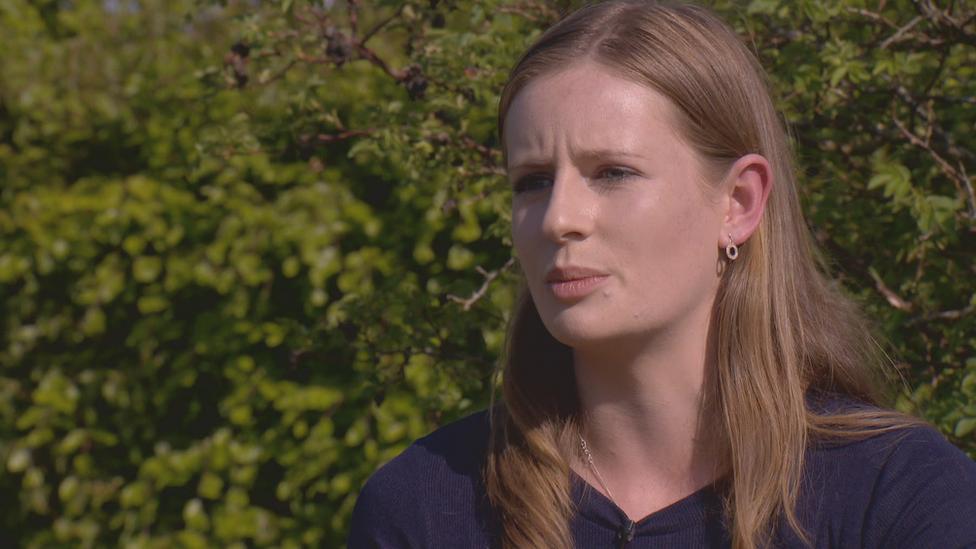
- Published22 February 2019
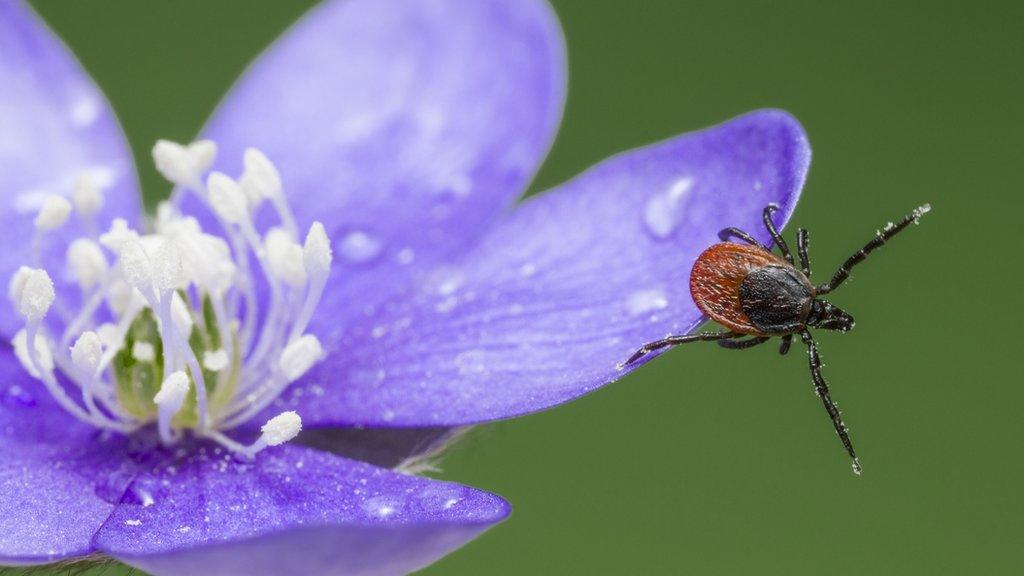
- Published13 May 2015
